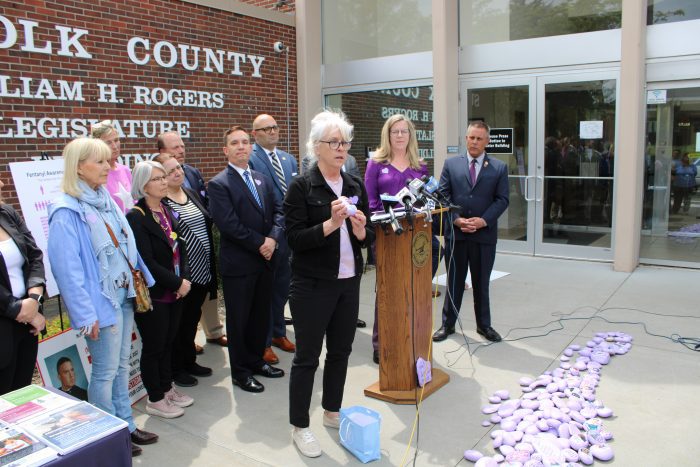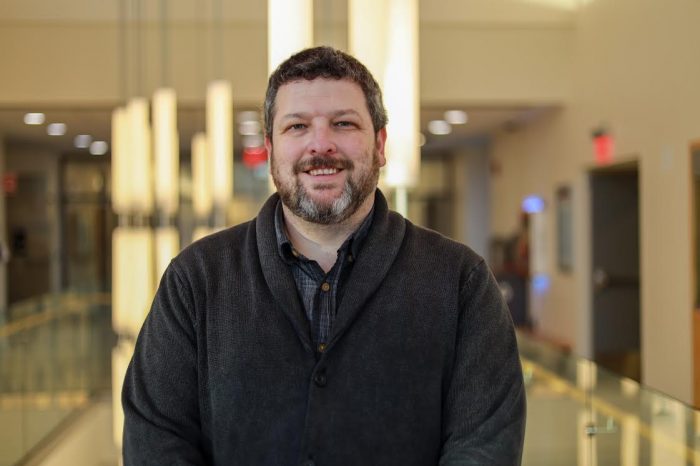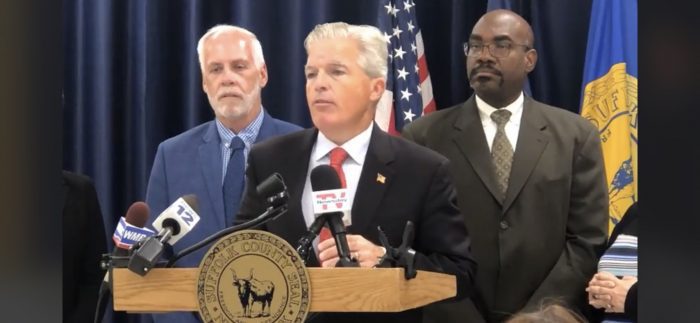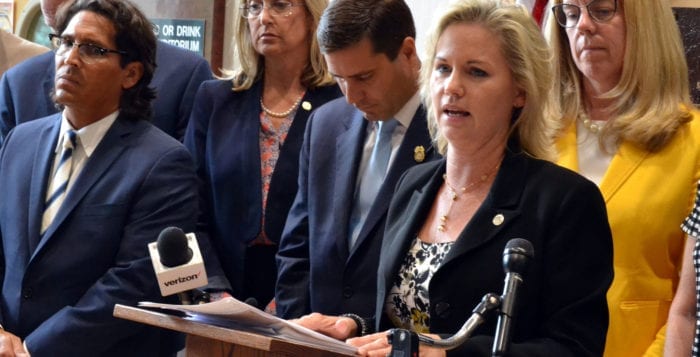By Rita J. Egan
Carole Trottere exemplifies turning personal tragedy into a mission to create positive change.
Following the loss of her son, Alex Sutton, to a heroin-fentanyl overdose in 2018, the Old Field resident became a dedicated advocate for raising awareness about the risks of fentanyl while ensuring victims are remembered.
Former Suffolk County Legislator Kara Hahn (D-Setauket) described Trottere as a woman with a unique perspective shaped by her son’s passing and her career as a public relations professional. The ex-legislator remembered the mother coming to her before a December 2022 press conference held in front of Hahn’s former office. The press conference, organized with the help of Trottere and in conjunction with Long Island Council on Alcoholism & Drug Dependence, addressed the increase of drug use during the holiday season.
“Carole said we have to remember that this is a moment of risk for families and people who are struggling with addiction,” Hahn said. “They’re sad because of the friends they’ve lost and their own depression, and it’s a real hard time for families who have lost loved ones because there’s an empty seat at the table.”
Trottere also worked with Hahn to organize a press conference at the Suffolk County Legislature building in Hauppauge May 9 to mark National Fentanyl Prevention and Awareness Day. The event featured purple rocks decorated with photos of those lost to accidental overdoses.
Earlier this year, Trottere also approached Hahn about placing Narcan, an opioid overdose reversal medication, in county facilities, which led to a bill co-sponsored by Hahn and Legislator Tom Donnelly (D-Deer Park). The resolution requires Narcan kits to be stored near external defibrillators in all county facilities. When interviewed about the bill for TBR News Media, Trottere said, “If you save one life, it’s sparing the parents the horrible grief that I go through and giving someone a second chance to try to get into recovery.” In April the bill was approved by the county Legislature.
In October 2022, Trottere hosted an event at her son’s favorite pizza place, Station Pizza in Stony Brook, in conjunction with the Suffolk County Police Department’s Behavioral Health Unit to commemorate what would have been her son’s 35th birthday. In addition to attendees receiving free pizza, police trained them in the use of Narcan. After nearly 50 people stopped by in 2022, Trottere hosted the event once again this year.
Working with families
Last year at the Drug Enforcement Administration National Family Summit on Fentanyl in Washington, D.C., and also at the December 2022 press conference, Trottere met Claudia Friszell and Lori Carbonaro. Friszell lost her son Marc Lewis in 2000 when he was 18, and Carbonaro’s son Nick died when he was 22 in 2014. Both women lost their sons to drug overdoses. They are active with LICADD and Gabriel’s Giving Tree, the grassroots organization founded by Paulette Phillippe in honor of her grandson Gabriel Phillippe.
The mothers said they quickly bonded with Trottere. Carbonaro calls her “a powerhouse with heart,” and Friszell said she holds Trottere in high regard as they both aim to turn their grief into positive actions.
“My son died 23 years ago, and we all try to take our experience and use it so that nobody else has to go through what we went through,” Friszell said.
This past summer, Trottere spearheaded the purple rock project at local farmers markets, where people who had lost family members to drug overdoses decorated the rocks with photos of their loved ones. The project was in conjunction with SCPD Narcan training. Friszell and Carbonaro, who have helped at the farmers markets, said it’s vital to show the victims’ faces and initiate conversations with all families.
“You have to meet the families where they’re at to get them armed with what they need as it could be in their family,” Carbonaro said.
She added, “If someone sees the purple rock and a child asks what it’s about and a parent can tell them, that’s one more person that knows, hopefully, what not to get into or how to save someone.”
Friszell said it’s important to remember the victims were human beings.
“These were your neighbors, your friends, your co-workers, your fellow students,” Friszell added. “They were people. They’re not just statistics, and it affects the whole family. That’s what really drew us to Carole because she had the same mindset.”
Carbonaro said Trottere wants to take her anger about her son’s death and use it to be part of a solution.
“With all the horrors going on, and what we’ve gone through and beyond and in other parts of the world, there is a lot of humanity still left, and we really need to share it — people like Carole,” Carbonaro said.
Trottere’s work destigmatizes the disease and raises awareness, which potentially could prevent future deaths, Hahn said.
“She’s taking this tragedy — and with being an effective communicator — to educate and bring awareness to the issue,” Hahn added. “I think it’s important. The fact of having lost her own son, she’s really able to understand the impact of the disease, and the humanity and the potential lost in the lives that were lost. There was so much potential in each person lost.”
For Carole Trottere’s important work in the field of drug addiction awareness, TBR News Media names her a Person of the Year for 2023.








